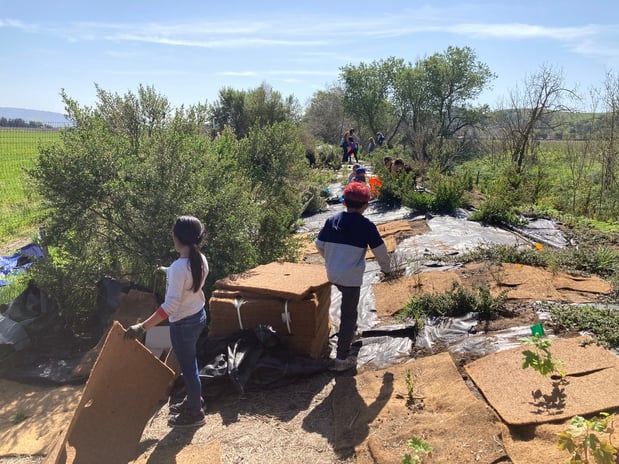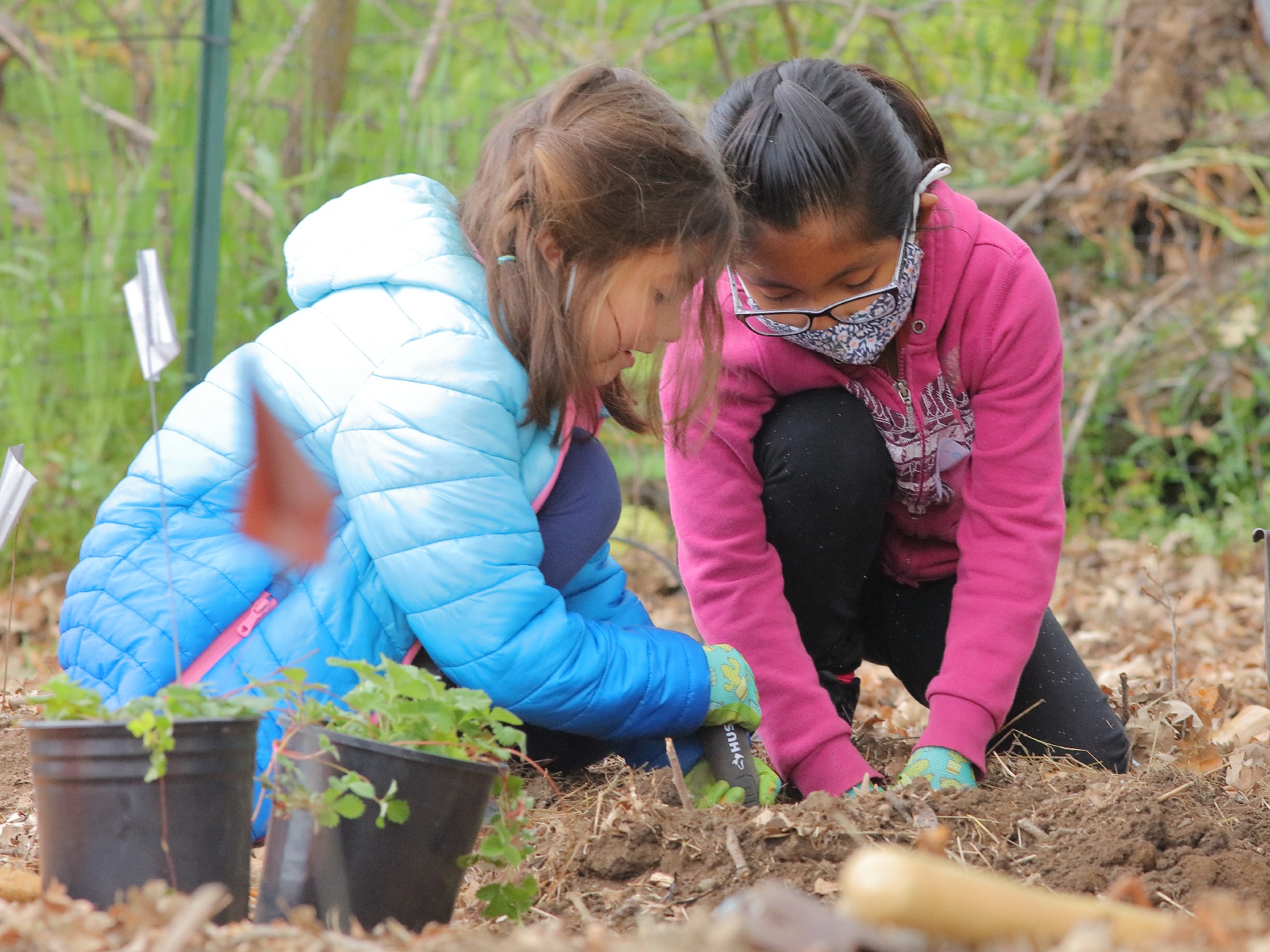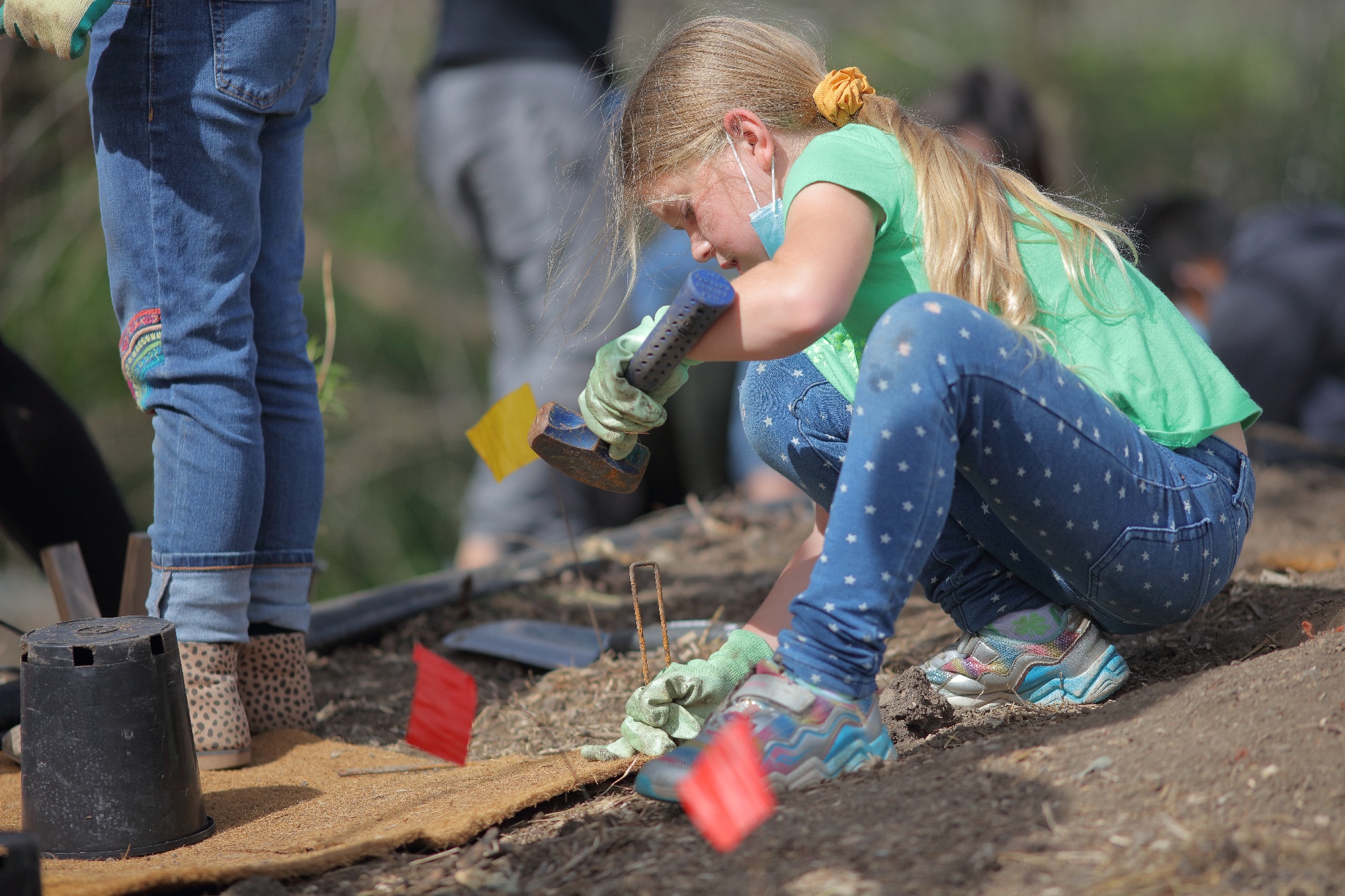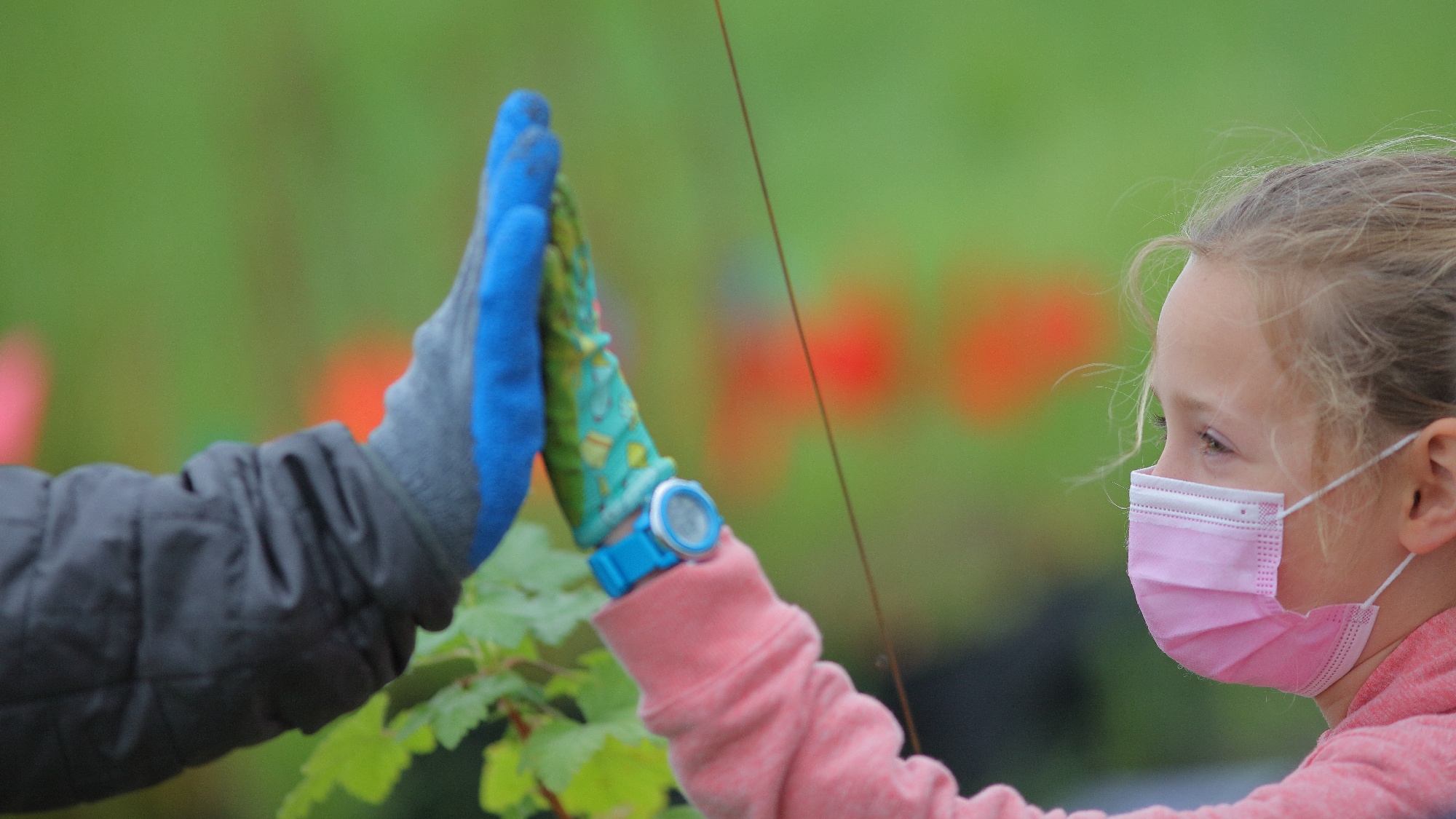They dug holes, they hammered stakes into coconut fiber mats, and they planted a whole lot of native plants - 159, to be exact - all to help restore essential creekside habitat the Fisher’s Bend riparian area. Pretty impressive work for three groups of second graders!
“I enjoyed making a watershed healthy,” shared one student excitedly. "I enjoyed being together and healthy,” another student chimed in.
This March, 70 second graders from Bradley Elementary School experienced an immersive life sciences field trip made possible by the partnership between Point Blue Conservation Science and the Open Space Authority.

The partnership with Point Blue began in 2019, through its innovative Students and Teachers Restoring a Watershed (STRAW) program, and they’ve led several plantings on Authority property since.
Jenni Benson, Senior Project Manager at Point Blue, has been leading environmental education events through STRAW for nine years. “Getting students outside and working with nature is an incredibly valuable experience,” she notes. “Not only is it healthy for them, but it also teaches them about their connection to the land around them, teaches them to care about it, and maybe will one day empower them protect it.”

Fisher’s Bend, located in Coyote Valley and connecting to Fisher Creek, is a wildlife corridor with critical riparian habitat (or habitat alongside a river). Over the years, the neglected land slowly degraded until the Peninsula Open Space Trust purchased it in 2017 (and it will be transferred to the Authority in the future). As part of the Fisher Creek Riparian Restoration project, the Authority’s Resource Management team is working to restore the area and bring it back to health so it can support the local ecosystem.
Over three days, the students planted a variety of native, creek-friendly plants including milkweed, common yarrow, holly-leaf cherry, red flowering currant, and more along the water’s edge. These plants, selected by Point Blue for their climate change adaptability and tolerance for droughts and floods, will support the riparian area and improve the health of the creek. The variety of plants will enhance biodiversity and create a wide selection of wildlife resources for pollinators, birds, and mammals as well as build structural diversity that incorporates tall trees for upper canopy habitat as well as low-growing shrubs and ground cover that reduce soil erosion.

The week prior to the plantings, Benson and Restoration and Education Technician with Point Blue, Celida Moran, visited Bradley elementary school to give them a preliminary in-class lesson to prepare them for the planting day.
"What did we learn about what makes a healthy creek?” Benson asked the students during the opening discussion, to which they responded with a list of answers they remembered from their lesson. “Healthy water!” “Plants!” “Rocks!” One student followed up with, “I like to call rocks nature’s filter!”

And the enthusiasm they displayed during their in-class lesson continued during the planting itself. After the instructional presentation, students excitedly grabbed their plants in nursery pots and brought them to the site, wild strawberries being a fan favorite, with holly-leaf cherry as a close follow-up. As they planted, Point Blue and Authority staff walked around offering support.
“I love this model of restoration,” said Galli Basson, Resource Management Program Manager at the Authority and lead on the Fisher Creek Riparian Habitat Restoration Project. “I think it’s so much more impactful -- we get to help the local ecosystem while strengthening these kids’ connection to the natural world, which will be so important down the road,” Basson put it. “And Point Blue has been such an amazing partner.”

This project was just one of the Authority’s many restoration efforts in the area. Multiple restoration projects have kicked off in the last couple of years, including the Spreckels Wetland Enhancement project and other sites along Fisher Creek upstream of this site, all with the goal of promoting the health of our local ecosystems and helping them support local wildlife, promote climate resilience, contribute to water security, and preserve the agricultural viability of the region.
Photos: David Mauk

